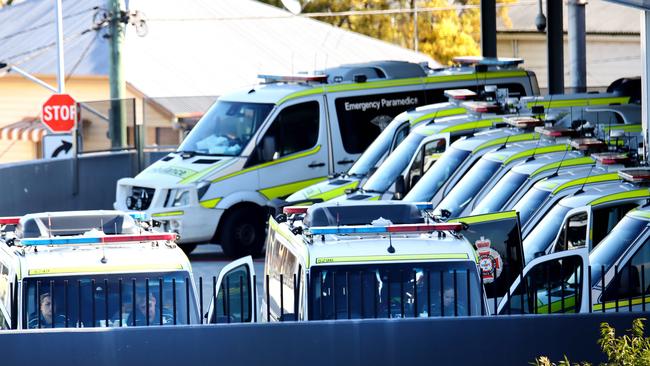National health reform agreement fails to meet its objectives as hospitals decline
Australia’s National Health Reform Agreement has resulted in ambulance ramping, excessively long elective surgery waiting lists, bed block and overstretched emergency departments, according to doctors.

Australia’s National Health Reform Agreement that governs how the commonwealth and states fund and manage hospitals is “not fit for purpose” and has resulted in ambulance ramping, excessively long elective surgery waiting lists, bed block and overstretched emergency departments, according to doctors.
The Australian Medical Association has analysed the objectives of the document against recent outcomes in hospitals as part of the midterm review of the national agreement and says the agreement needs a “complete makeover”, with every aspect of the system failing.
The NHRA – the key mechanism for the transparency, governance and financing of Australia’s public hospital system – was signed in 2020 between the commonwealth and all of the states and comes with $133.6bn in commonwealth funding flowing to the states for public hospital services. It runs until 2025 and aims to provide for better co-ordinated care in the community and to ensure the future sustainability of Australia’s health system.
But the AMA says in a submission to the agreement’s midterm review that the key objectives of the agreement are not being met, as evidenced by deteriorating hospital performance data on every measure in every state and territory.

“Years of reduction in capacity and available public hospital beds per population, inadequate funding of healthcare, both public hospitals and primary care, and the absence of a framework for performance and accountability enshrined in the document’s Addendum are the key factors that impact the deteriorating performance of our public hospital system,” the AMA’s submission says.
“The AMA is generally supportive of the principles and objectives that underpin the NHRA, however we argue that they are not being achieved under the current funding and structural arrangements.”
The AMA says it has observed that since the move from the Council of Australian Governments to a national cabinet governance structure, there has been a “significant, troubling reduction in transparency of actions and decisions made by the health ministers”.
“This lack of transparency has further contributed to a lack of accountability for the declining performance of public hospitals,” the submissions says.
The data that indicates the failure of the reform agreement has been widely published in a long-term and accelerated trend: wait times in emergency departments in 2021-22 were the longest in the past 20 years, elective surgery waiting lists are at record highs with more than half a million expected to be waiting for surgery in the public system by the end of this year, and wards are full with ambulances frequently ramped outside hospitals. Mental health patients in particular are spending inordinate periods of time in the ED, sometimes as long as 24 hours in some states.
“If the agreement is failing our hospitals and our patients, it needs a radical overhaul, yet we are stuck with this flawed formula until 2025,” AMA president Steve Robson said.







To join the conversation, please log in. Don't have an account? Register
Join the conversation, you are commenting as Logout